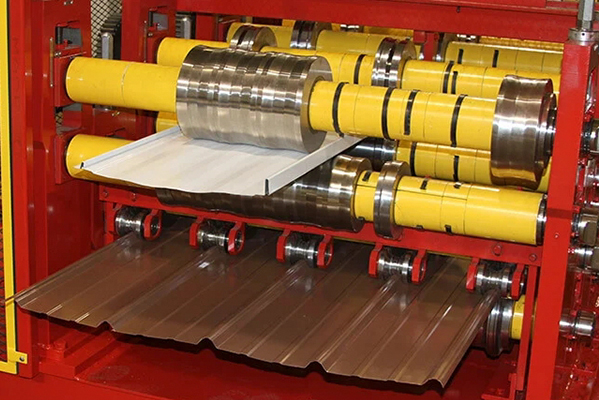Navigation Menu
Contact Us
- Email:
- info@wxavatar.com
- Address:
- Yurong Village, Yuqi Street, Huishan District, Wuxi, China.
Release Date:Apr 29, 2025 Visit:35 Source:Roll Forming Machine Factory
In manufacturing, choosing between forming and machining processes depends on various factors, including cost, production volume, material properties, and part complexity. While both methods have their advantages, the question of whether forming is more expensive than machining does not have a simple answer. Instead, the cost-effectiveness of each method varies depending on the application.

Understanding Forming and Machining
Forming refers to processes that shape materials by deforming them without removing material. Common forming techniques include forging, stamping, rolling, and extrusion. These methods are often used for high-volume production due to their efficiency in shaping metals and other materials.
Machining, on the other hand, involves removing material from a workpiece to achieve the desired shape. Processes like milling, turning, drilling, and grinding fall under this category. Machining is highly precise and is often used for low-to-medium production runs or when tight tolerances are required.
Cost Factors in Forming vs. Machining
1. Tooling and Setup Costs
Forming typically requires expensive dies, molds, or other tooling upfront. However, once the tooling is in place, the per-unit cost decreases significantly, making it economical for large production runs.
Machining generally has lower initial tooling costs, especially for CNC machining, where digital programs can be adjusted easily. However, the cost per part remains relatively stable, making it less efficient for very high volumes.
2. Material Utilization
Forming processes often have high material efficiency since they reshape the workpiece rather than cutting it away. This can reduce material waste and lower costs in the long run.
Machining generates chips and scrap material, leading to higher material costs, especially for expensive metals. However, machining allows for more flexibility in design changes.
3. Production Volume
For high-volume production, forming is usually more cost-effective due to lower per-unit costs after the initial tooling investment.
For low-volume or custom parts, machining is often more economical since it avoids the high upfront costs of forming dies.
4. Part Complexity and Tolerances
Forming is ideal for relatively simple or moderately complex shapes but may struggle with extremely intricate designs.
Machining excels in producing highly complex geometries and maintaining tight tolerances, though this can increase costs due to longer processing times.
5. Labor and Operational Costs
Forming processes, once set up, often require less skilled labor and can operate at high speeds, reducing labor costs per part.
Machining may require more skilled operators and longer cycle times, increasing labor expenses, especially for precision components.
When Is Forming More Expensive Than Machining?
Forming can be more expensive than machining in the following scenarios:
Low production volumes – The high initial tooling costs make forming impractical for small batches.
Prototyping or design iterations – Since forming dies are costly to modify, machining is preferred for parts that may undergo design changes.
Exotic or hard-to-form materials – Some materials are difficult to form without specialized (and expensive) equipment, making machining a better option.
When Is Machining More Expensive Than Forming?
Machining tends to be costlier than forming when:
Producing high volumes – The per-part cost of machining remains steady, while forming becomes cheaper at scale.
Using expensive materials – The material waste in machining increases costs compared to forming's near-net-shape efficiency.
Simple part geometries – If a part can be easily formed, machining it would be an unnecessary expense.

Conclusion
Neither forming nor machining is universally more expensive—the cost depends on production volume, part complexity, material choice, and other factors. Manufacturers must evaluate their specific needs to determine the most cost-effective method. For mass production of simple or moderately complex parts, forming often proves more economical. For low-volume, high-precision, or highly complex components, machining may be the better choice. By carefully analyzing these factors, businesses can optimize their manufacturing processes for both cost and performance.